Choosing the Best Chapstick for Fever Blisters
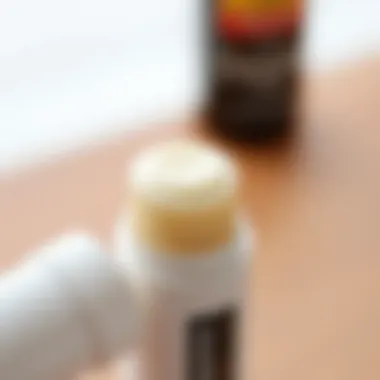

Intro
Fever blisters, also known as cold sores, can be a real thorn in the side for many. Not only do they bring physical discomfort, but they often come with a heaping dose of emotional distress. Managing these pesky outbreaks starts with proper lip care, and that’s where the right chapstick makes all the difference.
Choosing a chapstick tailored for fever blisters might seem straightforward, but the choices available can be a daunting maze. With countless products on the shelves, each boasting its own unique formula and benefits, it becomes crucial to understand what makes a chapstick effective in managing and alleviating the discomfort associated with these blisters.
This article will dive deep into the significant role of lip care in handling fever blisters. We’ll explore what triggers these outbreaks, discuss essential features to consider in a chapstick, and recommend top-notch products that come highly rated. By the end, readers will be equipped with the knowledge they need to confidently maintain their lip health and possibly sidestep future outbreaks.
Key Benefits
Physical Health Benefits
The benefits of using an appropriate chapstick extend far beyond mere aesthetics. Utilizing the right lip balm can assist in preventing the recurrence of fever blisters, offering a vital shield against environmental irritants.
- Moisture retention: A good chapstick traps moisture, which is essential especially when cold weather or dry air is in play. This hydration aids in preserving lip integrity, helping them to remain healthy and strong.
- Protection from further irritation: Ingredients like sunscreen or zinc oxide can provide a barrier against harmful UV rays, known to trigger fever blisters in some individuals.
- Healing serums: Some formulations include healing agents such as aloe or vitamin E that are useful in soothing existing blisters and promoting faster healing.
Mental Well-being Enhancements
The psychological burden of having visible fever blisters can be far-reaching. They often lead to self-consciousness and a decline in social interactions. However, incorporating a compelling chapstick into your routine can help mitigate these feelings:
- Boosted confidence: Knowing you have a product designed to care for your lips can provide a sense of control over outbreaks. A little confidence can go a long way in how one handles day-to-day interactions.
- Comfort in application: The sensorial experience of applying a chapstick—be it its scent, texture, or cooling effect—can distract from discomfort and serve as a soothing ritual.
"Investing in the right lip care is like putting on armor in battle against fever blisters."
Choosing the Right Chapstick
When selecting a chapstick, consider the following features:
- Ingredients: Look for antiviral ingredients—such as docosanol—that specifically target the herpes simplex virus. Additionally, moisturizers like shea butter and cocoa butter are invaluable for healing and nurturing the skin.
- SPF Protection: If spending time outdoors is on the agenda, opt for chapsticks with sun protection to fend off potential triggers.
- Natural Options: Some prefer natural ingredients that avoid chemical irritants, which might exacerbate existing lip issues.
Finding a chapstick that strikes a balance between hydration and treatment is vital. Investing time to decode labels can lead you to the perfect ally in the fight against fever blisters.
In the following sections, we will further dissect how lip care plays a pivotal role in managing fever blisters and ensure you make an informed choice in your journey towards healthier lips.
Understanding Fever Blisters
Fever blisters, also known as cold sores, can be more than just a seasonal nuisance. Understanding fever blisters is pivotal for anyone looking to manage their lip health effectively, especially those who are prone to breakouts. These tiny, painful blisters often spring up at the most inconvenient times, reminding us of their existence in the most uncomfortable ways. To properly address their presence, one must understand what they are, why they occur, and the factors that can lead to their emergence.
Definition and Causes
Fever blisters are typically caused by the herpes simplex virus, commonly type 1 (HSV-1). They appear on the lips, around the mouth, or even in the nasal area. While the virus is very widespread, not everyone will experience noticeable symptoms. The contagion often happens through direct contact, such as kissing an infected person or sharing utensils. Once the virus enters the body, it can lie dormant and reactivate due to various factors.
Research shows that approximately 67% of the global population carries the HSV-1 virus, but for many, it's a silent passenger. Understanding the causes of these outbreaks is essential because it sheds light on how to manage and prevent future ones, making it easier to address the discomfort through suitable lip care products like chapsticks.
Common Symptoms
The symptoms of fever blisters can vary from person to person, but a few indicators are generally recognized:
- Initial tingling or burning sensation: This can happen a day or two before a blister appears, serving as an early warning sign.
- Blisters: Fluid-filled sores that typically break open and crust over within a week.
- Discomfort: Pain or itchiness often accompanies the blisters, making everyday activities uncomfortable.
These symptoms present themselves in a cycle, often triggered by external factors, which further complicates management. Understanding these signs allows individuals to recognize an outbreak before it fully develops, enabling proactive measures to minimize the duration and discomfort.
Triggers for Outbreaks
Knowing what sparks an outbreak is just as crucial as understanding the condition itself. Several common triggers contribute to the likelihood of experiencing a fever blister:
- Stress: Both physical and emotional stress can weaken the immune system, allowing the virus to rear its ugly head.
- Illness: A cold or flu, or even more serious conditions, can result in an outbreak due to the body’s weakened state.
- Sunlight: Overexposure to sunlight can dry the lips and trigger blisters, a common reason why people notice breakouts after long outdoor days.
- Hormonal Changes: Fluctuations, particularly during menstruation or pregnancy, can also bring on blisters.
Identifying these triggers can significantly aid in preventing outbreaks by actively managing exposure to stressors and maintaining good lip care. Understanding these essential factors gives individuals a fighting chance to keep fever blisters at bay and underscores the importance of selecting optimal lip care products, such as chapsticks with antiviral properties.
The Impact of Lip Care on Fever Blisters
When it comes to fever blisters, often the focus is on the outbreak itself and the ways to treat it. However, providing proper lip care plays a crucial role in managing these unwanted nuisances. Understanding how regular lip care contributes to reducing the frequency and severity of outbreaks, as well as promoting faster healing, is significant for anyone battling these pesky sores.
Role of Hydration
Hydration is not just a matter of drinking enough water; it extends to how well you keep your lips moisturized. Chapped and dry lips are breeding grounds for irritation and can actually trigger the virus responsible for fever blisters, Herpes Simplex Virus type 1. Proper hydration helps to maintain the integrity of the skin on and around your lips.
Explaining this in simpler terms, well-hydrated lips act as a lock for moisture. When they are not hydrated, they can crack and create little openings where the virus can waltz in, setting off an outbreak. In practice, this means you should aim for chapsticks that provide long-lasting moisture. Look for ingredients that are known to keep lips supple, like shea butter and natural oils. You want a product that makes your lips feel pampered rather than dressed up in a mask of wax.
Here are a few things to keep in mind for hydration:

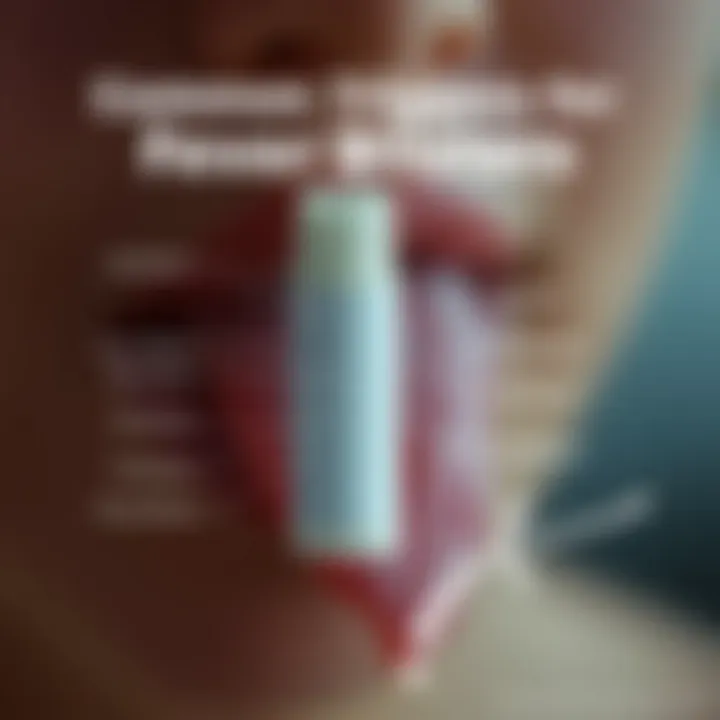
- Choose a moisturizing chapstick: Ingredients like hyaluronic acid can significantly enhance your lip hydration.
- Drink water throughout the day: Basic, but many forget this. It helps your body maintain overall skin elasticity.
- Avoid licking your lips: As tempting as it may be, saliva evaporates quickly, leaving lips drier than before.
"Keeping your lips hydrated not only helps in immediate comfort but also is a barrier against future outbreaks."
Importance of Protection
Protection is a cornerstone when managing fever blisters. Exposure to environmental aggressors can weaken the skin's defenses, leading to outbreaks. Extreme temperatures, harsh winds, and even excessive sun exposure can aggravate your lips, promoting conditions where blisters might thrive. Therefore, using a chapstick with the right protective qualities is essential.
Spf-rated lip balms are a necessity, particularly if you'll be spending time outdoors. UV rays can impair skin health, and for those dealing with fever blisters, this becomes both a cosmetic and medical issue. Not only does sun exposure potentially worsen current outbreaks, but it can also trigger new ones altogether.
To protect your lips effectively:
- Opt for chapsticks with SPF: Anything above SPF 15 can help shield your lips from harmful rays.
- Consider a barrier lip balm: Products designed to create a physical barrier against harsh climatic conditions can help minimize stress on the skin.
- Be choosy with flavors: While they can be tempting, highly flavored lip products may cause irritation—so opt for something simpler, especially if you're prone to blisters.
In summary, managing fever blisters successfully is as much about what you do for ongoing lip care as it is about treating the outbreaks themselves. By emphasizing hydration and protection, you can help create an inhospitable environment for the virus, making future flare-ups less likely and minimizing their impact when they do occur.
Selecting the Best Chapstick
Choosing the right chapstick is crucial when it comes to managing fever blisters effectively. The right product not only provides relief but also addresses factors that can exacerbate the condition. Chapsticks can serve as a first line of defense, preserving lip health by locking in moisture, fortifying against environmental stressors, and combatting the virus responsible for fever blisters. With a plethora of options on the market, understanding what to look for and what to avoid becomes imperative for those battling this discomfort.
Key Ingredients to Look For
Moisturizers
Moisturizers act as a protective barrier for the lips, preventing them from drying out. A significant aspect of moisturizers is their ability to enhance hydration, which is particularly vital when dealing with fever blisters. Look for chapsticks containing ingredients like shea butter or coconut oil. These components not only add moisture but also offer a soothing sensation.
Key characteristic: Moisturizers are beneficial because they create an environment conducive to healing.
Unique feature: Their engaging texture makes lips feel supple, which can provide micro-comfort to those dealing with painful outbreaks.
Advantages: Regular use of moisturizers can reduce the frequency of outbreaks and promote faster recovery during flare-ups.
Antiviral Agents
Antiviral agents are crucial in preventing and controlling the outbreaks of fever blisters. Ingredients such as docosanol or benzyl alcohol specifically target the herpes simplex virus.
Key characteristic: They are a popular choice among those experiencing frequent outbreaks because they tackle the root cause directly.
Unique feature: The effectiveness of these compounds lies in their ability to disrupt the virus's life cycle, minimizing the severity and duration of symptoms.
Disadvantages: Some may experience sensitivity or irritation, which could deter their use, particularly for sensitive skin.
Sunscreen Protections
Skin protection is especially important when managing fever blisters. Sunscreen in chapsticks helps shield delicate lip skin from harmful UV rays, which can trigger outbreaks. Look for products containing SPF 15 or higher that offer broad-spectrum UVA/UVB protection.
Key characteristic: Incorporating sunscreen into lip care reflects a proactive approach.
Unique feature: Consistent use fosters long-term skin health, decreasing the likelihood of sunburn, which could worsen lip conditions.
Advantages: Overall, this not only minimizes immediate sun damage but supports overall healing of current outbreaks.
Avoiding Harmful Additives
Fragrances
Fragrances in lip products can be a double-edged sword. While they can make the product more appealing, they often introduce allergens. Fragrances may lead to irritation for those already struggling with fever blisters.
Key characteristic: Many users favor unscented chapsticks, especially during a flare.
Unique feature: Unscented products ensure that those with sensitive skin avoid unnecessary reactions, thereby alleviating discomfort and allowing for smoother healing.
Disadvantages: While some fragrances may create a fresh experience, the risk often outweighs the benefit, possibly triggering an outbreak instead of preventing it.
Flavors
Flavored chapsticks tempt many with their appealing scents. Yet again, the benefits may be overshadowed by potential pitfalls. Flavors can enhance a product's taste and palatability, yet they occasionally lead to enhanced sensitivity.
Key characteristic: Those dealing with fever blisters might find that flavored products worsen dryness or cause irritation.
Unique feature: The presence of certain flavors, particularly artificial ones, has potential for causing or worsening lip conditions.
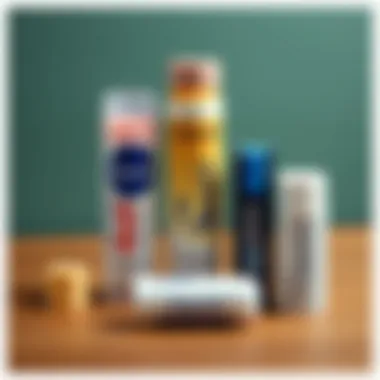
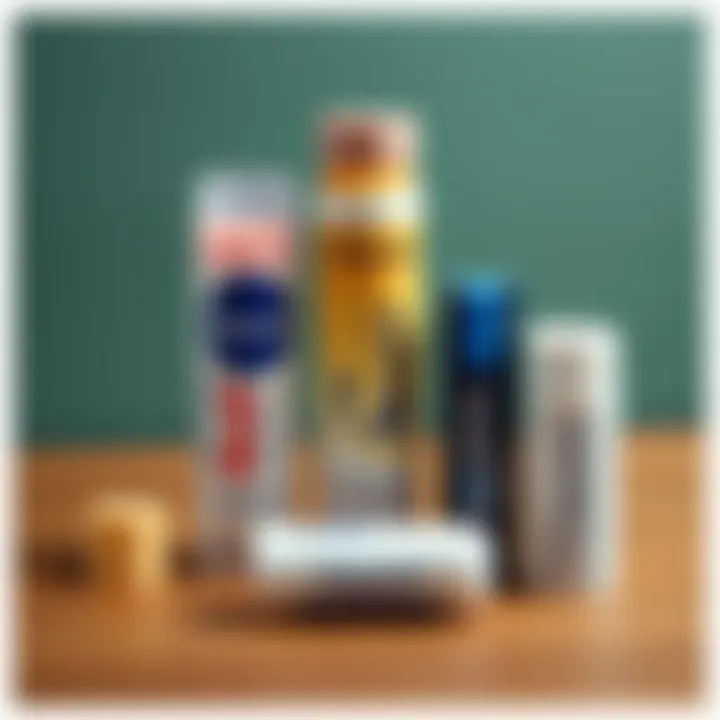
Advantages: Flavor choices could be enticing, but they often come with the possibility of discomfort that could make the experience less enjoyable overall.
Synthetic Dyes
Dyes give chapsticks their appealing colors, but many individuals may want to avoid these altogether. Synthetic dyes can sometimes irritate skin and contribute to allergic reactions, leading to complications when fighting a fever blister.
Key characteristic: Opting out of synthetic dyes appears to be a safe bet for those prioritizing their lip health.
Unique feature: The enhancement of natural colors using plant-derived pigments, if available, can provide a visually appealing product without the associated risks of synthetic additives.
Disadvantages: While a splash of color might be appealing, the repercussions on sensitive lip tissue could dissuade users from tolerating these products under challenging conditions.
Top Recommendations
When it comes to managing fever blisters, the right chapstick can be a game changer. Not all lip balms are created equal, and understanding the nuances of what makes one particularly suitable for this condition can save you time and discomfort. A well-chosen chapstick not only helps in providing immediate relief but also plays a role in preventing future outbreaks by maintaining healthy, hydrated lips. In this section, we will take a closer look at three standout products that have been reviewed and recommended by users and experts alike.
"Choosing the right chapstick is not just about relieving pain; it's about taking proactive steps in lip care to combat fever blisters effectively."
Product A: Detailed Analysis
Key Features
Product A stands out due to its unique combination of moisturizers and antiviral agents. The presence of natural emollients like shea butter and coconut oil ensures that the lips stay hydrated throughout the day. Furthermore, its inclusion of lysine, an amino acid known for its potential to reduce the frequency of outbreaks, makes it a compelling choice for anyone struggling with fever blisters. This multifaceted approach brings dual benefits: it treats existing blisters while also providing a protective barrier against potential triggers.
User Feedback
User reviews for Product A highlight a recurring theme: effectiveness paired with comfort. Many users report a noticeable decrease in the duration of outbreaks after incorporating this chapstick into their routine. A particular user noted how the soothing texture didn’t just alleviate immediate discomfort but also seemed to promote healing more rapidly than products they had used previously. However, some have mentioned that while effective, the price point is slightly higher than traditional lip balms, which might be a consideration for budget-conscious individuals.
Cost-effectiveness
On the cost front, Product A offers fair value given its specialized formulary. It may be pricier than basic chapsticks, but when evaluating its performance and user satisfaction, many find it justifiable. The potential savings on avoiding multiple outbreaks could more than offset the initial expense. However, it’s wise to note that not everyone might find it equally effective, so a trial period could be beneficial before committing to a bulk purchase.
Product B: Detailed Analysis
Key Features
Product B excels with its distinctive blend of sun protection and quality moisturizing agents. Formulated with SPF, it not only prevents sunburn on susceptible skin but also keeps lips hydrated through ingredients like vitamin E and jojoba oil. This dual action makes it particularly appealing to those who live in sunny climates or frequently engage in outdoor activities, ensuring that they don’t inadvertently trigger an outbreak while enjoying the sun.
User Feedback
Feedback on Product B has largely been positive, with many users appreciating its light, non-greasy texture. Reviews often mention that it glides on smoothly, leaving behind a subtle shine, which many find aesthetically pleasing. However, some users have pointed out that the sun protection factor might wear off after a while, necessitating reapplication, especially after eating or drinking. Thus, while effective, it might require more diligent use for best results.
Cost-effectiveness
Cost-wise, Product B sits comfortably within a mid-range price bracket. Users have noted that for the quality and added benefits of SPF, it remains a reasonable investment. Many deem it worthwhile, especially given the added layer of protection it affords. Nonetheless, potential buyers should weigh their priorities, particularly if sun exposure is not a daily concern, to avoid spending on unnecessary features.
Product C: Detailed Analysis
Key Features
Product C is formulated with a focus on soothing irritated lips while fighting fever blisters. The addition of calendula extract is a notable inclusion; it's well-known for its anti-inflammatory properties, which can help ease pain and redness associated with outbreaks. Moreover, its blend of organic beeswax creates a moisture-retaining barrier, promoting a healthy recovery environment for healing.
User Feedback
Users have expressed satisfaction regarding Product C’s ability to calm irritation and its pleasant, mild scent. Reviews often mention its ability to penetrate dry or chapped lips effectively without leaving a sticky residue. However, some feedback indicates variability in effectiveness; while many find it beneficial, a handful thought it didn’t perform as well on particularly severe outbreaks.
Cost-effectiveness
While Product C is positioned at a slightly lower price point than its competitors, many users appreciate that it gets the job done without breaking the bank. It provides a decent blend of features, making it a solid option for those looking for a budget-friendly solution. Yet, individuals should consider whether its effectiveness aligns with their personal experience and if they’re willing to sacrifice some features for cost efficiency.
In summary, selecting the right chapstick involves assessing individual needs and preferences. Each product offers unique benefits and drawbacks, allowing for strategic choices based on distinct lifestyle and blister management requirements.
User Experiences and Comparisons
In the realm of lip care, user experiences play an invaluable role, especially when it comes to selecting chapstick for managing fever blisters. Understanding the preferences and outcomes of individuals who have battled similar challenges provides not just anecdotal evidence but also real-world efficacy insights. These experiences can guide new users in making informed choices, leading to happier and healthier lips.
When approaching a product like chapstick, individual reactions can vary widely. Many factors influence these diverse experiences, including skin type, sensitivity, and personal preferences regarding texture, scent, and flavor. Therefore, a comparative analysis of user experiences can highlight which products resonate best with particular needs while offering a deeper understanding of potential shortcomings.
Survey of Users' Preferences
Gathering data from a broad spectrum of users reveals some common threads in preferences regarding chapstick formulations. Users often cite ingredients as a major factor influencing their choices. For instance, preferences show that chapsticks enriched with natural oils like coconut or jojoba are frequently favored due to their moisturizing properties without the lingering greasiness of alternative products.
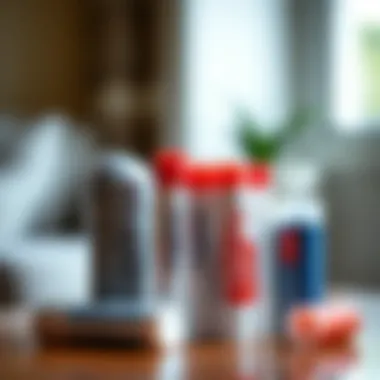
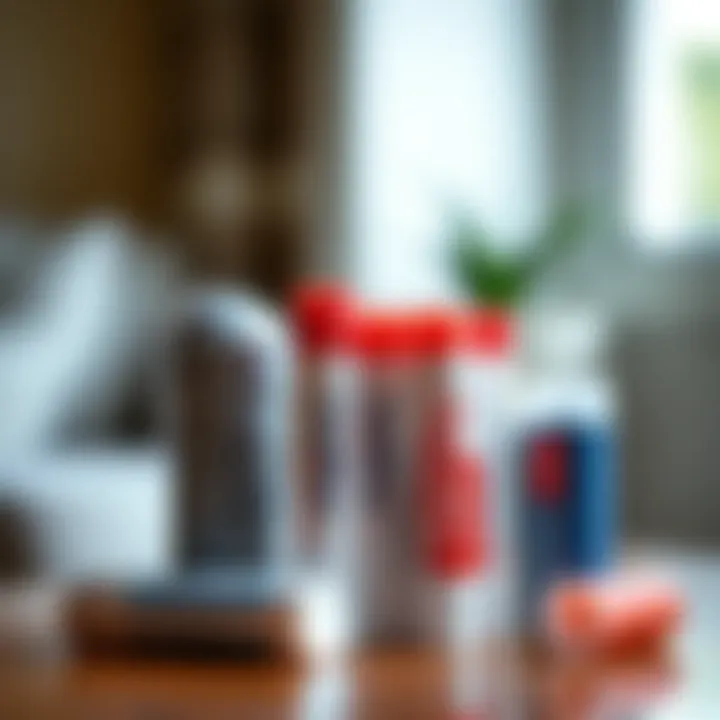
Here are some insights from a survey conducted among users:
- Natural Ingredients: Many users prefer those chapsticks that incorporate organic components. They appreciate formulations that are free of parabens and synthetic additives.
- Texture Effects: Users often highlight the importance of how a chapstick feels on their lips. A creamy consistency that glides on smoothly tends to get a thumbs up, while waxy textures are less popular.
- UV Protection: A recurring theme in user feedback emphasizes the necessity for sun protection. Customers feel that chapsticks with SPF are particularly advantageous in preventing fever blister outbreaks related to sun exposure.
- Ease of Use: Convenience is key; users tend to prefer chapsticks that come in simple, easy-to-open containers as part of their daily routine.
Comparative Effectiveness
Evaluating the effectiveness of various chapsticks based on user feedback often reveals clear distinctions in performance. Users have shared their opinions on different products based on their direct experiences with relief from fever blister discomfort. The effectiveness may hinge upon several factors – the synergy between ingredients, individual skin responses, and additional elements like time of application relative to outbreaks.
In comparative analyses, users emphasized:
- Speed of Relief: How quickly the chapstick alleviated symptoms can influence overall satisfaction. Some users reported immediate soothing effects from certain antiviral-infused chapsticks, marking them as a preferred choice.
- Duration of Protection: Longevity matters. Users tend to favor products that provide extended protection, allowing them to go longer between applications without losing moisture or facing a resurgence of symptoms.
- Overall Satisfaction: Ultimately, how satisfied a user feels with their chosen chapstick can be distilled into a personal rating. Many surveys allow users to rate their experiences on a scale, which helps in assessing popularity and effectiveness.
Understanding user experiences provides a window into the effectiveness of chapsticks, guiding new users to make well-informed choices tailored to their unique needs.
In summary, the section on User Experiences and Comparisons underscores the importance of real-world feedback. Users’ preferences on ingredients, texture, and functional effectiveness ultimately shape the narrative of which chapsticks succeed in managing fever blisters.
Lifestyle Tips for Managing Fever Blisters
Managing fever blisters goes beyond just the topical treatments. It encompasses a holistic approach towards hygiene and dietary habits that can play significant roles in preventing outbreaks or reducing their severity. Adjusting one’s lifestyle could be the pivotal factor between recurrent blisters and maintaining soft, healthy lips. Stress management, nutrition, and hygiene aren't just buzzwords in health discussions; they form the bedrock of effective self-care when it comes to this condition.
Hygiene Practices
Keeping the lip area clean and free from irritants is essential in managing fever blisters. Regular hygiene practices can help reduce the risk of infection and support quicker healing in the event of an outbreak. Here are some fundamentally sound practices to consider:
- Frequent Handwashing: Our hands come into contact with numerous surfaces, acquiring germs along the way. Washing hands regularly helps prevent the transfer of these viruses to the lips. When you feel an itch or notice early signs, ensure that you wash your hands before you touch your lips.
- Avoid Shared Items: Items like lip balms, towels, and eating utensils can spread the herpes simplex virus. Steer clear of sharing personal items with friends or family, especially during a flare-up.
- Use a Clean Applicator: If using a chapstick that comes with an applicator, make sure it’s clean. Application directly from the tube without a clean tool can introduce bacteria that lead to infections.
- Keep Lips Moisturized: Regularly applying a nourishing chapstick can keep your lips hydrated and reduce the urge to lick them, which can lead to cracks and further irritation. Look for moisturizing ingredients like beeswax or coconut oil.
Dietary Considerations
What goes into your body can significantly influence your skin health, including the vulnerable skin of your lips. Certain dietary habits may strengthen your immunity and potentially lower the risk of outbreaks.
- Stay Hydrated: Water is your best friend. Staying well-hydrated helps keep your skin and lips supple. Aim for at least eight glasses a day or more if you're active or in a warm climate.
- Incorporate L-lysine: This amino acid is known for its ability to inhibit the replication of the herpes virus. Foods rich in lysine include dairy products, fish, chicken, and legumes. Consult a nutritionist to discuss the right amounts for your diet.
- Limit Arginine-rich Foods: Some studies suggest that arginine might promote herpes virus growth. You might want to limit exposure to arginine-rich foods like chocolate, nuts, and seeds during an outbreak.
- Boost Immunity with Antioxidants: Include plenty of fruits and vegetables, especially those rich in vitamins C and E, as they can fortify your immune system. Berries, oranges, spinach, and nuts are excellent choices for this.
In summary, taking a proactive approach towards hygiene and dietary habits can be crucial for managing fever blisters. By establishing good practices and cultivating beneficial eating habits, you not only improve your overall health but also reduce the likelihood of outbreaks and promote faster healing when they do occur.
When to Seek Professional Help
Fever blisters, while often trivialized as mere cosmetic inconveniences, can escalate into serious health concerns if left unchecked. Understanding when to seek professional help is crucial for effective management and to prevent complications. Ignoring symptoms or attempting to self-treat severe cases can lead to prolonged discomfort and adverse health outcomes. In this section, we will delve into specific elements that warrant immediate medical attention and discuss strategies for consulting with healthcare providers.
Signs of Severe Infection
When dealing with fever blisters, recognizing the signs of a severe infection is paramount. Here are some indicators that should raise a red flag:
- Persistent Pain: If the pain doesn't subside or worsens over time.
- Excessive Swelling: Noticeable inflammation that spreads beyond the affected area.
- Fever: A high temperature accompanying blister outbreaks could suggest a more systemic issue.
- Discharge: Any pus or abnormal fluid is a sign that an infection may be developing.
- Persistent Symptoms: If symptoms linger longer than two weeks, it’s likely an indication of a complication.
On noticing any of these symptoms, it is crucial to get in touch with a healthcare professional. Early intervention can prevent severe complications and promote quicker healing.
Consultation with Healthcare Providers
When it comes to managing fever blisters, knowledge is power. Yet, there are times when professional advice becomes invaluable. Here are some factors to consider when consulting with healthcare providers:
- History of Frequent Outbreaks: If fever blisters are a regular nuisance, a healthcare professional can provide more aggressive treatment options or preventive measures.
- Underlying Conditions: Certain health issues can predispose individuals to more common or severe outbreaks. Conditions like HIV/AIDS, cancer, or autoimmune disorders require specialized attention.
- Treatment Options: Providers can prescribe antiviral medications or topical treatments that are more effective than over-the-counter options, expediting recovery.
- Infection and Complication Management: If an infection develops, professional guidance is vital in managing symptoms and ensuring appropriate treatment to prevent further complications.
Seek Medical Attention Promptly: When in doubt, don’t hesitate to consult a healthcare provider. Better safe than sorry when it comes to your health.
Culmination
Though fever blisters may seem benign, knowing when to seek professional help can make all the difference in your healing journey. Don’t wait until symptoms worsen; proactive care is your best bet for a swift recovery. Stay informed, and prioritize your health.
Concluding Thoughts
Understanding the complexities surrounding fever blisters is pivotal for both comfort and prevention. This article has explored a range of topics including the underlying causes, effective lip care routines, and the most beneficial chapsticks for managing outbreaks.
When choosing a chapstick, one must not overlook the role of essential ingredients such as moisturizers and antiviral agents which can significantly contribute to alleviating discomfort and promoting healing. More importantly, steering clear of harmful additives, which can exacerbate symptoms, is equally crucial. This knowledge arms readers with the ability to make informed choices, thus fostering better management of their condition.
"Knowledge is power, and when it comes to health, informed choices can lead to a path of better living."
Summary of Key Points
To summarize, several critical aspects emerged throughout the article:
- Definition and Causes: Fever blisters stem from the herpes simplex virus, with numerous triggers potentially bringing them on.
- Impact of Lip Care: Proper hydration and protection of the lips are vital to managing outbreaks effectively.
- Selection Criteria for Chapsticks: Look for ingredients that support healing while avoiding those that may worsen symptoms like synthetic dyes and harsh fragrances.
- Recommendations: Several products stood out through consumer feedback and expert analysis, ensuring thorough evaluation tailored to individual needs.
Final Recommendations
In closing, when it comes to managing fever blisters with chapstick, personalization is key. Here are the final recommendations based on the findings presented:
- Choose chapsticks that contain natural moisturizers such as shea butter or coconut oil for effective hydration.
- Look for options fortified with antiviral ingredients, like docosanol or tea tree oil, that can support the healing process.
- Ensure your product also features some form of sun protection, ideally SPF 15 or higher, as sun exposure can trigger outbreaks.
- Avoid products loaded with synthetic fragrances or colors as they not only tend to irritate but can also provoke further outbreaks.
Equipped with this knowledge, readers are encouraged to prioritize lip health as part of an overall strategy for managing fever blisters effectively.















